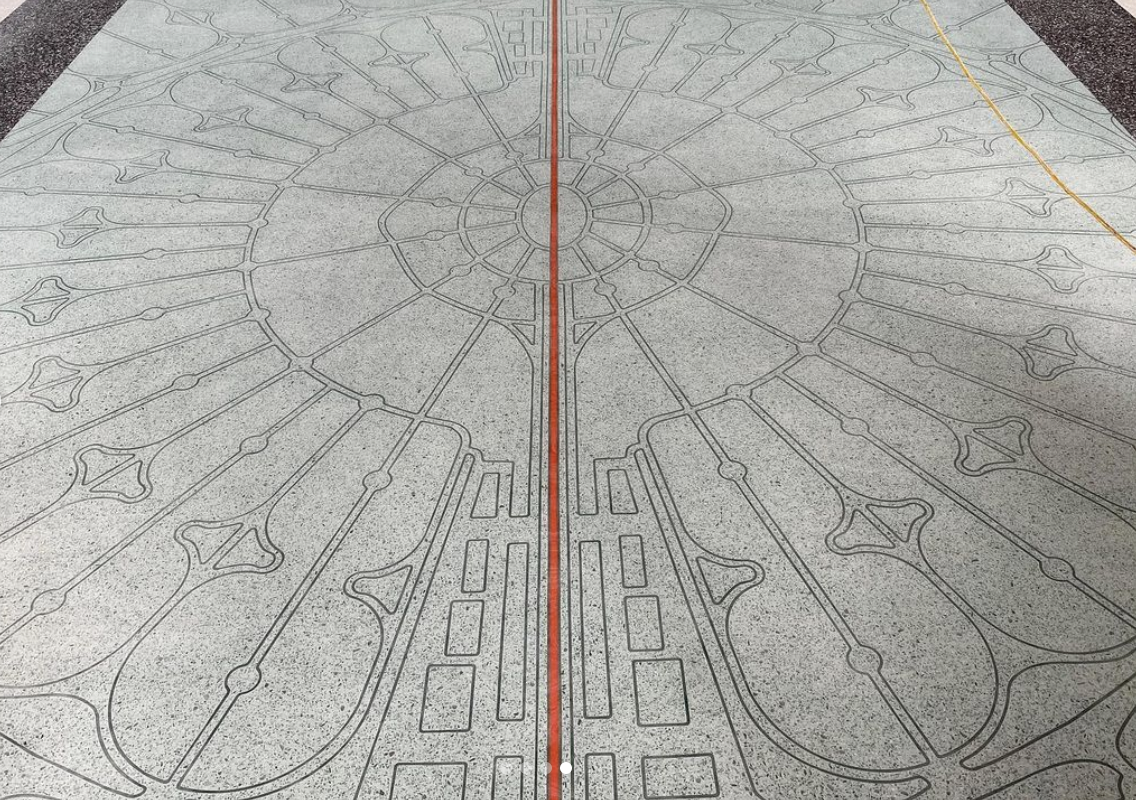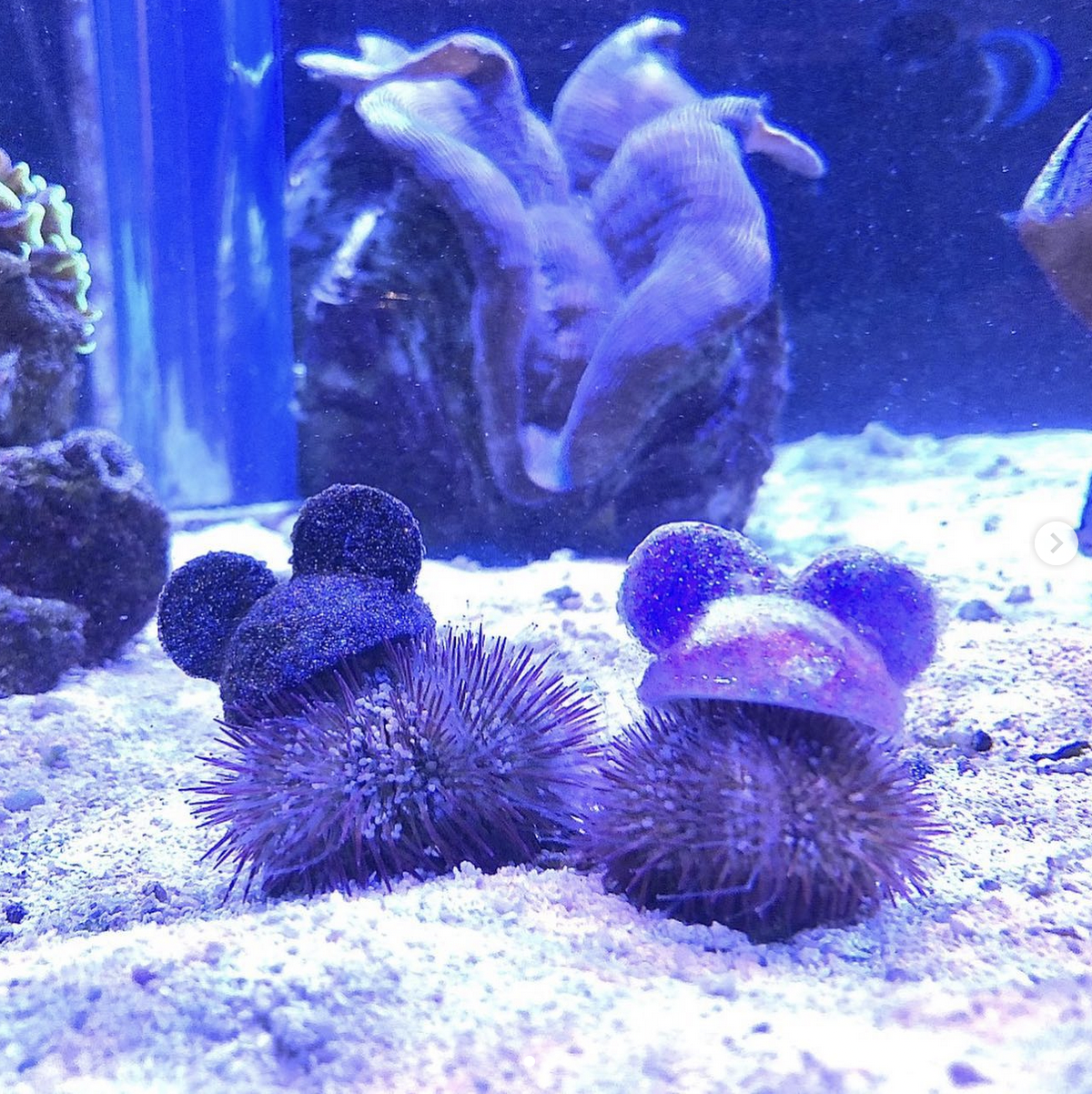In 2019, Disney unveiled its plans for a major overhaul at Epcot, one of its most innovative and futuristic theme parks in Florida. Although the transformation will likely take a decade to complete, a few new additions are underway and will be revealed during Walt Disney World’s 50th anniversary, which has been ongoing since October of last year.
It might be difficult to compete with major upcoming attractions at Epcot. For instance, there’s the Guardians of the Galaxy roller coaster set to open during Memorial Day weekend 2022. There’s also the Tron Light Cycle Run, another great ride that has already begun push-pull testing. However, one restaurant is pulling out all of the stops to grab attention. This includes paying tribute to the park’s creator, Walt Disney, and it’s doing so with 3D printing.
Thanks to a post by Disney Imagineer Zach Riddley, we got a closer look at the incredible 3D printed flooring design for the Connections Café and Eatery, a brand new fast-casual quick-service restaurant located at Epcot’s World Celebration land.

3D printed flooring design for the upcoming restaurant at Epcot in Walt Disney World. Image courtesy of Zach Riddley via Instagram/The Walt Disney Company.
“Guests will discover detailed flooring designs (yes, more flooring) that pay homage to the radial layout and celebrate the purposeful geometry and organic symmetry of Epcot,” describes Riddley. He is part of Walt Disney Imagineering Research & Development, the research and development arm of The Walt Disney Company, responsible for the creation, design, and construction of the theme parks, cruise ships and even real estate developments.
The radial, greenbelt plan displayed in the geometrically intrinsic flooring design is an exact replica of Walt Disney’s original concept for “Epcot city,” an outline inspired by the garden city movement of urban planning. Envisioned in the 1960s, the idea was to create a working prototype city that would “‘never cease to be a living blueprint of the future.” However, after the park creator’s death, the project turned into the Epcot theme park. The futuristic vision of what might be described today as a “smart city concept” was only immortalized on a canvas. Today, the Imagineers are bringing that piece of Disney history to life.
“Epcot is full of iconic shape language that evokes grand ideas about cities, innovation, and the potential for design to make the world a better, more integrated place. These iconic Epcot designs were evident as far back as Walt’s original site plans for the Florida project, where Eocit was to serve as the literal and conceptual ‘center’ of Walt Disney World, where one could live, learn and experience innovations that would later come to define everyday life as we know it,” the Imagineer explained.
Riddley’s images from his Instagram account show the various stages of the process, from the linework to a near-finished product just prior to its final buffing. These designs were created with a sustainable biopolymer material which is 3D printed to provide “an intricate template.” Skilled craftspeople then layout that linework to create inlays in the poured flooring material, with the final design revealed through rounds of sanding and buffing, “where classic and cutting-edge techniques meet.”

3D printed flooring design for the upcoming restaurant at Epcot in Walt Disney World. Image courtesy of Zach Riddley via Instagram/The Walt Disney Company.
Earlier this year, Riddley hinted that there would be nods to the park’s history, which opened in October 1982, and this is an excellent surprise to millions of Disney fans. Launching this spring, the new fast-casual restaurant and adjoining café was inspired by the core Epcot idea of “connecting” over food and gathering people across cultures.
“Epcot has never stopped evolving––what Walt foresaw as a constant ‘state of becoming. To this day, Imagineers continue to draw inspiration from those original concepts and ideas for the park throughout the current transformation,” went on Riddley, who has also worked on other major projects at the parks, including Epcot’s Space 220 Restaurant and Remy’s Ratatouille Adventure.
Imagineers have been leveraging 3D printing at the parks for several years. Back in 2017, they used a 3D model to showcase the two Star Wars-inspired lands, now officially called Star Wars: Galaxy’s Edge, in Disneyland and Disney World. Then, once the lands were open, Disney designers were granted access to the Lucasfilm archives to study original props, artifacts, and costumes, which were digitally scanned to take 360-degree images. Finally, 3D prints were used to create new molds for the items, which were then replicated as merchandise.
Other areas of the park have also relied on 3D printing, including Disney’s Animals, Science, & Environment department, which recently shared a post of small 3D printed Mickey ears created especially for The Seas with Nemo & Friends pavilion. The hats were placed in one of the sea-like environments, where a sea urchin and an Epaulette shark were seen having fun with the 3D printed accessories.

Urchins naturally picked up the 3D-printed Mickey ears to celebrate the 50th anniversary of Walt Disney World Resort. Image courtesy of Dr. Mark Penning via Instagram.
In another bold move, Disney Imagineers in Glendale, California, tested 3D printing methods to create muscles that can mimic authentic humanoid movements for Project Exo. Kept under wraps for almost two years, Disney finally revealed what it was about. The team is developing a very elaborate full-body exoskeleton system piece by piece that could one day be used to bring Disney characters, like the Hulk, to life at the theme parks and interact with guests.
Like many of the other innovative uses for the technology, Epcot’s upcoming 3D printed floor design reinforces the 50-year old history of one of the most visited theme parks in the world. Not only does it mimic Walt’s original idea, but it makes sure the origin story of Epcot continues to unfold, even as the park changes and transforms.
Subscribe to Our Email Newsletter
Stay up-to-date on all the latest news from the 3D printing industry and receive information and offers from third party vendors.
You May Also Like
Profiling a Construction 3D Printing Pioneer: US Army Corps of Engineers’ Megan Kreiger
The world of construction 3D printing is still so new that the true experts can probably be counted on two hands. Among them is Megan Kreiger, Portfolio Manager of Additive...
US Army Corps of Engineers Taps Lincoln Electric & Eaton for Largest 3D Printed US Civil Works Part
The Soo Locks sit on the US-Canadian border, enabling maritime travel between Lake Superior and Lake Huron, from which ships can reach the rest of the Great Lakes. Crafts carrying...
Construction 3D Printing CEO Reflects on Being Female in Construction
Natalie Wadley, CEO of ChangeMaker3D, could hear the words of her daughter sitting next to her resounding in her head. “Mum, MUM, you’ve won!” Wadley had just won the prestigious...
1Print to Commercialize 3D Printed Coastal Resilience Solutions
1Print, a company that specializes in deploying additive construction (AC) for infrastructure projects, has entered an agreement with the University of Miami (UM) to accelerate commercialization of the SEAHIVE shoreline...





























